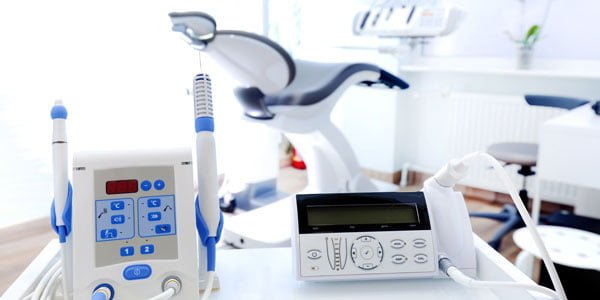
Dr. Rich Mounce gets to the root of cleaning systems
Cleaning root canal systems is obviously complex and related to a confluence of variables (debridement, irrigant activation, agents used, and mechanism of delivery). Mechanisms of irrigant activation include passive ultrasonic, sonic, laser (photon-initiated photoacoustic streaming), multi-sonic energy, apical negative pressure, and mechanical agitation, among others.
Variables in irrigation include exposure time, canal anatomy, canal contents, volume, refreshment rate, agent utilized, sequence of agents used, achievement of patency and frequency of recapitulation, canal taper, master apical diameter, and drying technique.leaning root canal systems is obviously complex and related to a confluence of variables (debridement, irrigant activation, agents used, and mechanism of delivery). Mechanisms of irrigant activation include passive ultrasonic, sonic, laser (photon-initiated photoacoustic streaming), multi-sonic energy, apical negative pressure, and mechanical agitation, among others.
In addition, agents utilized vary according to concentration, surface tension, tissue dissolving capacity, substantivity, sequence of agents used, capacity for smear layer removal, cost, shelf life, toxicity, among many potential qualities, attributes, and limitations.
Ask 100 endodontists how they utilize these variables to clean canals, and it’s likely you’ll get 100 different answers. It is not difficult to see why this is the clinical reality; an evaluation of the scientific literature with regard to irrigation methodologies, agents, solutions, delivery, and activation mechanisms provides a diverse array of often conflicting results. Add the laser and multisonic cleaning systems now available into the mix, and the clinical and commercial environment becomes even more confusing.
Part of the challenge of drawing conclusions, among other factors, is the widely divergent methodologies that have been used in many of the previous studies. Interpreting the scientific literature with clinical practice techniques is anything but straightforward.
Given this background, it is fair to ask if now is the time to spend big money to achieve a reported “big clean” by endodontically utilizing the new and novel GentleWave™ (GW) (Sonendo®) and/or photon-induced photoacoustic streaming (PIPS) technologies. The answer is maybe yes and maybe no. Maybe yes, because mounting science is slowly proving these systems’ advantages relative to conventional methods. Maybe no, because it is valid to ask if it is worth the formidable financial investment for GW and a significant fee per handpiece/per case to gain the advantage these systems represent relative to conventional activation methods. Currently, the value proposition is unclear to me as to whether it makes sense to be an early adopter immediately or to wait.
If the first wave of machines prove clinically effective and mechanically durable over the long term without iatrogenic accidents, and the scientific literature bears out the superiority of GW, then in the early second wave of adopters, with or without simultaneous obturation, yes, it’s time to buy. Alternatively, give me a PIPS or GW that obturates simultaneously now, and I’m in immediately.
GW, in particular, markets the advantage of its system (in part) as time saved in canal preparation and savings on files. True to a point, but how much time is spent at the endodontic-specialty level gaining profound anesthesia, patency, and glide path? A great deal. How much time is spent enlarging canals with nickel-titanium once we have the glide path? Not much. The Sonendo handpiece costs much more than all the disposable supplies and files used in virtually any case. GW also claims that tooth structure is saved with minimally invasive endodontics. Again, true to a point, but what is the vertical fracture risk in a properly prepared and restored tooth?
Very little.
The future is headed in the direction of GW and/or a PIPS-like ultra-cleaning that is less technique sensitive and obturates canals. How could it not be? To believe these technologies are a fad and will go away is to put one’s head in the sand and see the future of endodontics as static. It is anything but static. Change is inevitable and embraced; the question is more about timing. I welcome your feedback.
Stay Relevant With Endodontic Practice US
Join our email list for CE courses and webinars, articles and more..

 Dr. Mounce has lectured and written globally in the specialty. He owns
Dr. Mounce has lectured and written globally in the specialty. He owns 